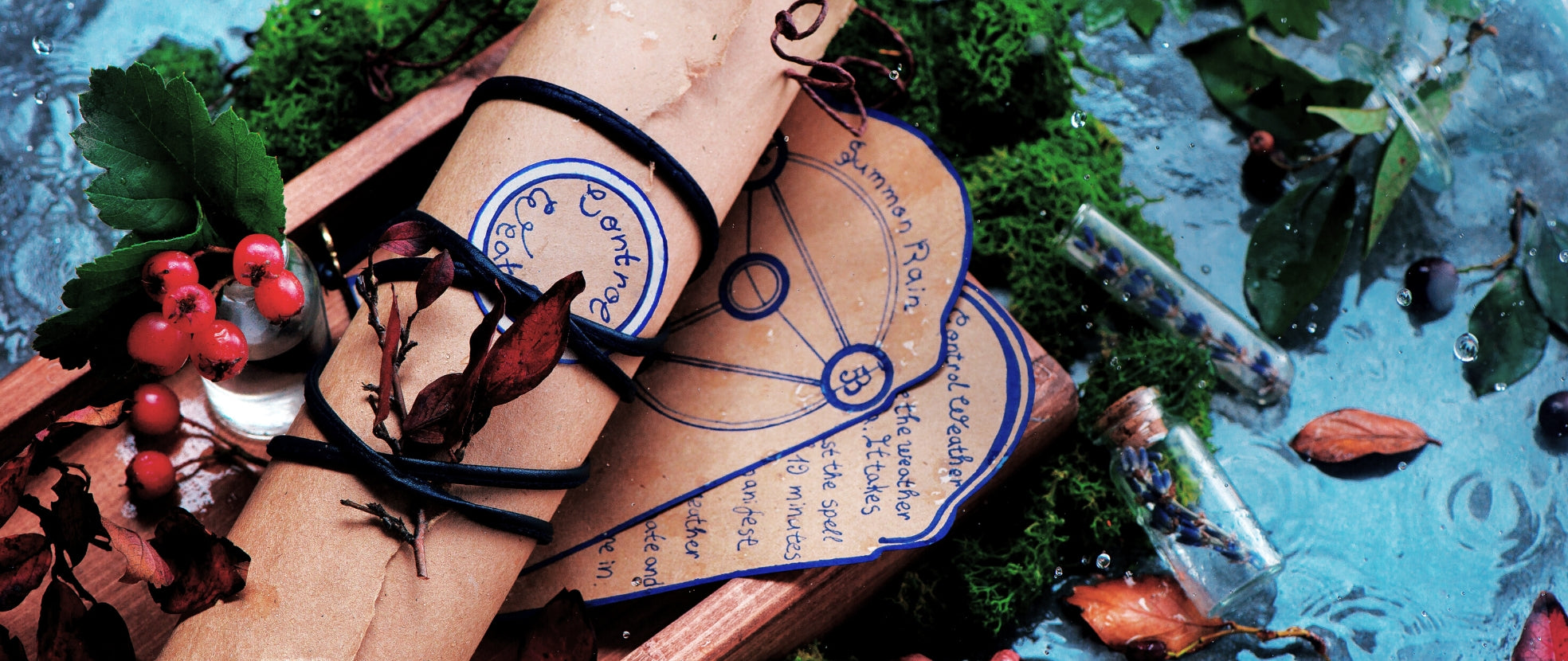Gemstones are shiny, smooth, and simply beautiful. They can make any place look better and help us feel calm when things get a bit hectic.
But did you ever wonder where these amazing stones come from? How they are made?
In this article, we will explore the exciting journey of how a gemstone is formed. So, get ready to learn all about the life of a gemstone, from its start deep within the Earth to when it ends up in our hands.
What is a gemstone?
A gemstone is a special kind of stone that can be precious or semi-precious and is often used to make things like jewelry. It's not just a regular rock, but something really special. These stones can be parts of minerals that are cut and polished to look shiny and beautiful.
Some gemstones, like the pretty blue lapis lazuli, are actually rocks. Others, like amber or pearl, come from plants or animals. All these different gemstones are loved and valued, not just because they are beautiful, but also because they have a special energy that can make us feel good. When you hold or look at your gemstones, remember they are nature's gifts, bringing beauty into our lives and connecting us with the Earth's energy.
From Minerals to Crystals
Most gemstones are crystals, they form in nature as crystallized minerals. By definition, crystals are solids made up of atoms with a repetitive structure (or crystal systems). Crystallization is the process where atoms or molecules form into a crystal.
Minerals need these 5 elements to be present so they could grow into crystals:
- Time
- Space
- Ingredients
- Temperature
- Pressure
When the temperature is high enough, a liquid can hold many minerals mixed within it. But when the temperature drops, the liquid can't hold as many minerals. This causes crystals to start forming.
Various minerals in a solution will crystallize at different temperatures. For instance, corundum might solidify first. And as the solution cools, topaz might crystallize next followed by quartz.
Pressure has no direct impact on the formation of gemstones. But pressure combines with temperature to help crystallize a mineral. This is the case for gemstones that crystallize underground. They require extremely high temperatures and pressures to form.
Some gemstones take a long time to form, from 1000's of years (opal) to a billion years (diamond). Ingredients, heat, and pressure must combine in the right amount of time for minerals to reach crystallization. This would not be achievable without a suitable space (environment) for development.
In What Environments Do Gemstones Form?

Gemstones form in several environments on the Earth. The majority of gems are formed in the top layer of the Earth called the crust. The crust has a depth or thickness of 5 to 70 km.
Most are dug out of the Earth through mining, while others are brought to the surface through natural geological processes. These processes can deliver gems from as far as 400 km below the surface.
Let's take a look at the different environments where gems are found:
- Sedimentary deposits
Gems form when water near the surface of the Earth mixes with and dissolves minerals. How these solutions maintain the minerals depend on physical conditions. For example, if the solution cools or evaporates, the minerals will precipitate.
The dissolved elements determine the resulting mineral. If the water has interacted with rocks with high silica content, silica-rich minerals will form.
Examples of silica-based minerals are quartz, opal, and agate. If the water has interacted with copper-based rocks, the resulting minerals are azurite, malachite, or turquoise.
- Hydrothermal deposits
Crystallization in this environment involves water and heat. Saturated rainwater or water (containing carbon dioxide and gaseous substances) is pushed up through the Earth, filling cracks and cavities. As the water starts to cool, the minerals in the solution crystallize.
Hydrothermal deposits usually contain combinations of elements that can't be found anywhere else. Common minerals that are produced in these deposits are beryl and tourmaline.
Today, breakthroughs in gem science have made it possible to recreate hydrothermal conditions in labs to make synthetic gemstones. These include emeralds, quartzes, alexandrites, and rubies among many others.
- Igneous (in the Earth's mantle)
Some gemstones are formed in the Earth's mantle (which makes up 80% of the Earth's volume) where it's extremely hot. These include diamonds, ruby, sapphire, and peridot. These stones are valuable and are often expensive.
Igneous gems are brought closer to the Earth's surface through soil erosion, weathering, and eruptions. According to geologists, diamonds crystallize in the magma underneath the crust and get pushed to about 150 miles to the surface.
The magma can move through the crust more rapidly than volcanic eruptions. And in the process, the magma dissolves rocks and pushes them to the surface. Changes in temperature and pressure can cause diamonds to vaporize and keep them from crystallizing.
These wildly changing temperatures within the crust cause crystals to break. As a result, it's rare to find areas where crystals have formed and remained whole. This also makes larger, intact gemstones rare to find.
- Metamorphic environments
Most of the popular gemstones in the market are given to us by the process of metamorphism. Ruby, garnet, and sapphire were produced when pre-existing rocks changed into new forms (chemically and physically) when exposed to increased temperature, pressure, and active fluids.
These changes led to the formation of new minerals, an increase in density and grain size, and changes in texture and structure. Metamorphism happens in the tectonic plates. This explains why several gem deposits are found near fault lines, as well as in areas where plates interact with each other and create heat and pressure.
There are 2 main types of metamorphism:
- Contact metamorphism - This happens when magma forces its way into a rock formation. When extreme heat is present, rocks melt and crystallize as new rock formations. Garnet, lapis lazuli, and spinel are gems that form through contact metamorphism.
- Regional metamorphism - A more widespread process than contact metamorphism, regional metamorphism covers a much more diverse mix of minerals and occurs over broad areas of the Earth's crust (e.g., fold mountain belts or cratonic areas).
Most gem species that come from metamorphic rocks are highly durable. Due to high tenacity, these gems remain intact after erosion and weathering, even as they emerge to the surface. Examples of these gems are garnet, kyanite, and staurolite.
Geological Interruptions that Affect Gem Growth

As mentioned, gemstones grow in the fractures and cavities located at the lower surface of the crust. Over time, they become crystals when heat, pressure, and mineral ingredients are present.
However, the fracture and cavities open and close many times throughout their crystallization process. When these openings close, crystal growth stops as well. If the passages reopen, the crystals resume their growth.
These growth disruptions can affect the final appearance of gemstones, manifesting in the following physical changes:
- Twinning - When a crystal grows new layers, one on top of the other (e.g., cathedral quartz)
- Colour zoning - Uneven distribution of colors within a gemstone, which can be subtle to obvious. This is caused by temperature changes and uneven incorporation of minerals during a crystal's formation (e.g., ametrine, fluorite, and tourmaline).
- Parting - This happens when minerals in a crystal break along parallel planes as a result of external stress. Parting appears identical to cleavage, only that a cleavage is caused by an alignment of weaker bonds between atoms in the lattice.

- Inclusions - When two different minerals crystallize at the same time. In some cases, one mineral outgrows the other and engulfs it. (e.g., the growth of pyrite crystals inside emeralds).
In other conditions, fluctuations in pressure and temperature cause chemical impurities to exist within a host crystal. In this phenomenon, the host crystal acts as the cavity that holds the ingredients, creating the right conditions for them to crystallize.
This explains the formation of rutile in corundum and quartz crystals.
- Healing fractures - Crystals break during extreme geological processes in the crust. But when the proper conditions for crystal growth are met, gem materials can penetrate into the cracks and fractures where the gemstones crystallize. This "heals" the fracture and rejoins the crystals together.
But even after growing back, these crystals still have scar-like inclusions in them known as ˜healing fractures.' Geologists also call these gaps ˜fingerprints' because they resemble fingerprints. Rubies and sapphires often have these inclusions.
- Phantoms - This occurs when a new crystal layer grows over a transparent crystal. One common example is the growth of phantom quartz. At the beginning of its formation, it had a feldspar layer that covered the original clear quartz crystal. After some time, conditions changed and the quartz crystal resumed its growth and covered the feldspar.
In effect, the gemstone displayed the outline of the feldspar layer. Since its growth was halted, the feldspar left behind an indistinct outline that appears like a ghost or phantom. Thus, the name ˜phantom quartz crystal.' Phantom crystals take millions of years to form.
You've always heard how gemstones are believed to store the ancient wisdom of the universe; that they're a symbol of continuous evolution, nurturing, and rigorous growth. Now, after a glimpse of the long and arduous process of gemstone formation, now it's crystal clear why they are linked to these associations!
Sources:
Clark, D. (n.d.). Gem Formation: How are Gemstones Created? International Gem Society. Accessed at https://www.gemsociety.org/article/gem-formation/#How_Mountain_Building_and_Erosion_Bring_Gems_to_the_Surface
How Do Gemstones Form? (n.d.). Gem Rock Auctions. Accessed at https://www.gemrockauctions.com/learn/technical-information-on-gemstones/how-do-gemstones-form
Where Do Gems Form? And Where Are They Found? (n.d.). Nature.berkeley.edu. Accessed at https://nature.berkeley.edu/classes/eps2/wisc/Lect3.html
Geological Origin of Gemstones. (2018. November 11). Australian Museum. Accessed at https://australian.museum/learn/minerals/gemstones/geological-origin-of-gemstones/
The Geology of Gemstone Formation Where, How & Why. (2019, December 31). RareGoldNuggets.com. Accessed at https://raregoldnuggets.com/?p=8150
Metamorphism. (n.d.). Britannica. Accessed at https://www.britannica.com/science/metamorphism
Metamorphism. (n.d.). ScienceDirect. Accessed at https://www.sciencedirect.com/topics/earth-and-planetary-sciences/metamorphism
Types of Metamorphism. (2018. November 13). Australian Museum. Accessed at https://australian.museum/learn/minerals/shaping-earth/types-of-metamorphism/
Nace, T. (2019, August 26). 4 Layers Of The Earth Made Easy. Forbes. Accessed at https://www.forbes.com/sites/trevornace/2019/08/26/4-layers-of-the-earth-made-easy/?sh=5f21844245d8
Gray, J. (n.d.). Zoning in Crystals. Gamineral.org. Accessed at https://www.gamineral.org/writings/zoning-gray.html
Cleavage, Parting & Fracture (Physical Properties Of Gemstone). (n.d.). Gemstonebuzz.com. Accessed at https://www.gemstonebuzz.com/education/cleavage-parting-fracture-physical-properties-of-gemstone/
Types of Mineral Inclusions. (2017, June 3). Geologypage.com. Accessed at http://www.geologypage.com/2017/06/types-mineral-inclusions.html






